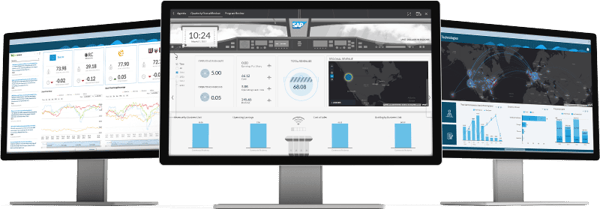People are hard-wired to recognize and interpret faces with amazing speed, accuracy and attention to detail. Even as infants we quickly learn to know our own parents’ faces and to differentiate them from strangers’ faces. Throughout life, the ability to automatically pick up on subtle facial cues and to “read” the meaning behind them are critical factors for streamlining complex social interactions and enabling rapid decisions such as friend vs. foe, and cooperation vs. opposition.

Imagine if you met someone without a face. How would you even begin to interact with them?
Well, that’s how most CFOs and other C-level executives feel when they hear the term “Financial Transformation” without a way to clearly visualize what it means.
Even though it has become a frequently used buzz word, Financial Transformation still is a somewhat vague concept that is hard for most people to get their heads around. The default position is usually, “well, I’ll know it when I see it”. But how the heck are you going to see it?
Thankfully, new advanced analytics solutions are helping to put a “face” on Financial Transformation. Just as reading other peoples’ faces is critical to effective interpersonal communication, leveraging advanced analytics is key to understanding what’s happening with your financial processes.
Integrating broad-based analytics capabilities with the Digital Boardroom concept enables insightful visualization to give decision-makers a clear understanding about what’s happening with the various initiatives that comprise any particular Financial Transformation program.

By integrating an Analytics-based approach to Financial Transformation initiatives and leveraging the Digital Boardroom concept for visualization, C-level executives are empowered with real-time contextual information and ad hoc analysis to keep the transformation process on track.
For example, if your transformational goals include streamlining staffing, improving efficiency and/or reducing processing times, integrated analytics and Digital Boardroom reporting can provide readily understandable visual evidence of progress, problems and outcomes.
Also, by getting all stakeholders to use a shared analytics environment and Digital Boardroom with a single-source-of-truth, this approach eliminates the turf-battles that can too often arise around issues with disparate data. Instead of trying to sort out who has the correct information, the whole team can move forward together and address real issues to assure success of transformational efforts.
In effect, joining your Financial Transformation program to unified Analytics and the Digital Boardroom provides a metrics-oriented mindset from the very beginning of the project. It forces all stakeholders to think about goals and how to measure them. This upfront effort goes a long way toward outlining the features of the face so that ongoing analytics and reporting can fill all of the details during the Financial Transformation process and beyond.
After the Financial Transformation journey is well underway and even after completion of major goals, the integrated analytics and Digital Boardroom capabilities continue to help decision-makers across the entire enterprise stay on top of financial and business management issues. These key analytics tools and disciplines provide the ongoing mechanism by which you can continuously identify and address new emerging issues and drilldown to resolve or avoid ad hoc problems by predicting them ahead of time.
Analytics not only provides the “face” for Financial Transformation; ideally it also encompasses the entire nerve system that extends throughout the body and animates what is seen on the face. To accomplish this, it’s critical that the Analytics tools and processes be able to bring together data from a full spectrum of existing systems and processes, along with the ability to apply consistent metrics as these processes are changed. Otherwise, there can be gaps in monitoring the big picture and drilling down into the operational details, which ultimately may keep the Financial Transformation program from achieving overall corporate goals.
The power of analytics is fully proven through the success of Financial Transformation, however, the enduring, tangible benefits of advanced analytics go well beyond the transformation process. As users see the payback from being able to visualize, analyze and understand what’s happening throughout the organization, leveraging analytics becomes as natural as reading the expression on a good friend’s face.
By unifying enterprise-wide information from legacy systems, line-of-business applications, and disparate data sources from the start and then applying the same analytics to forward-looking system changes, the Digital Boardroom can provide both the starting point and the road-map to Financial Transformation success, as well as laying the foundation for ongoing business growth and success.

